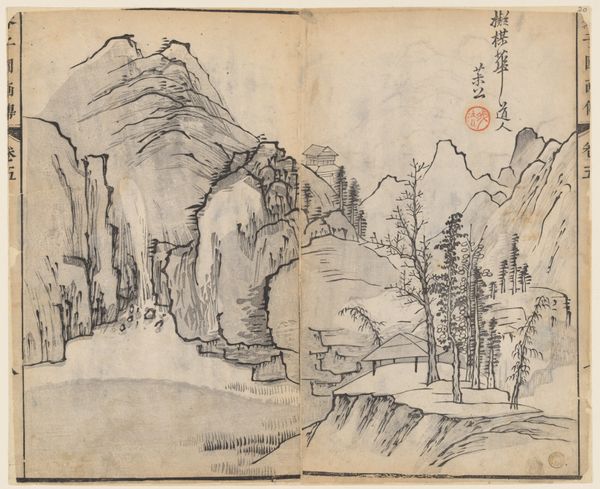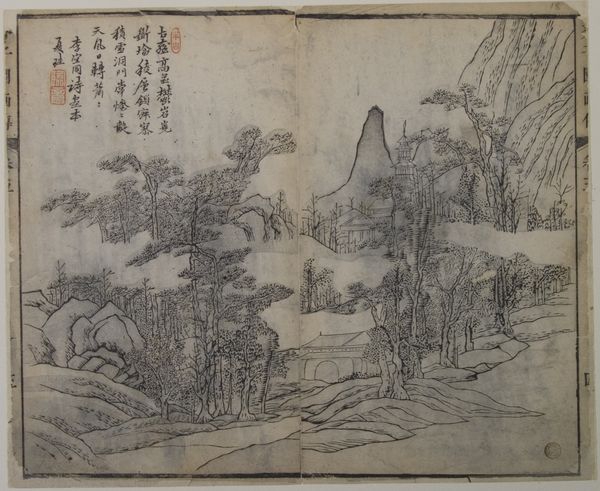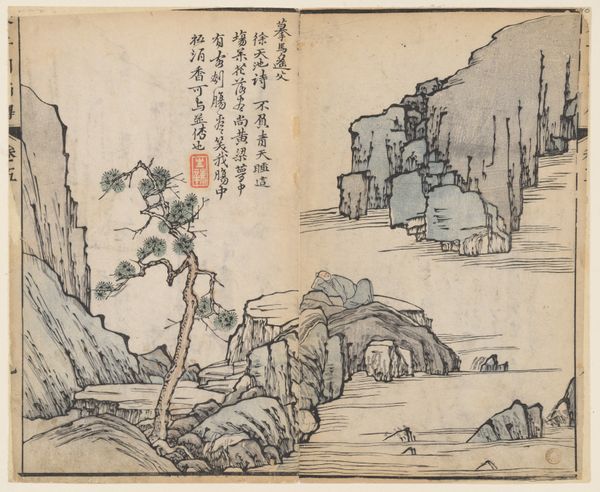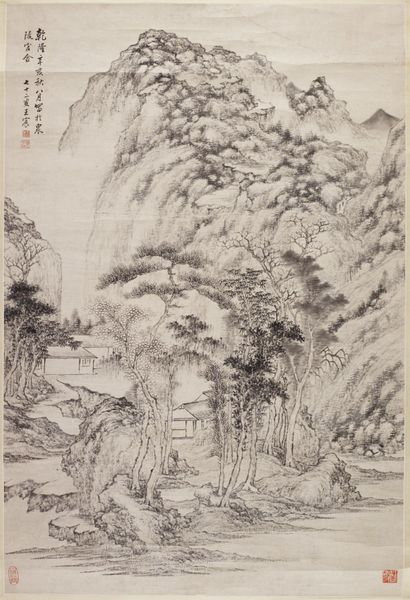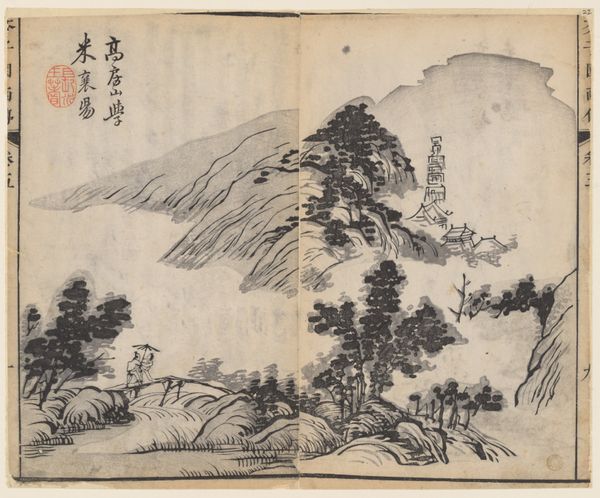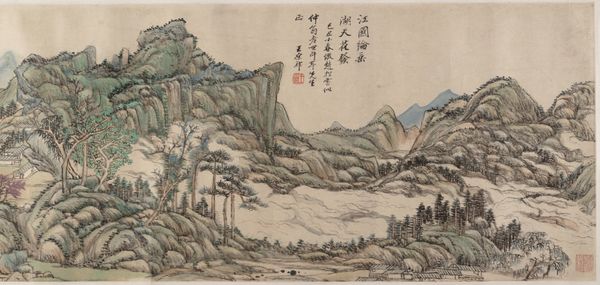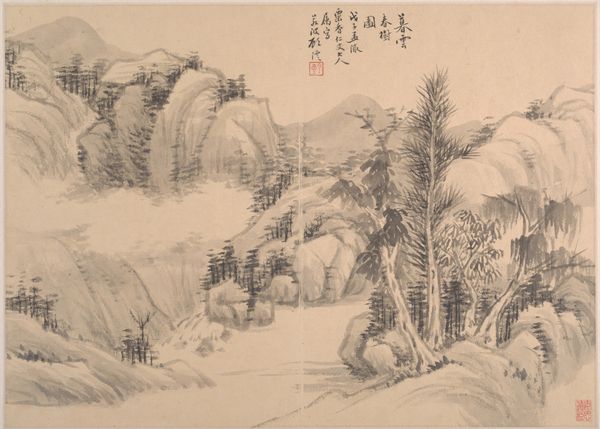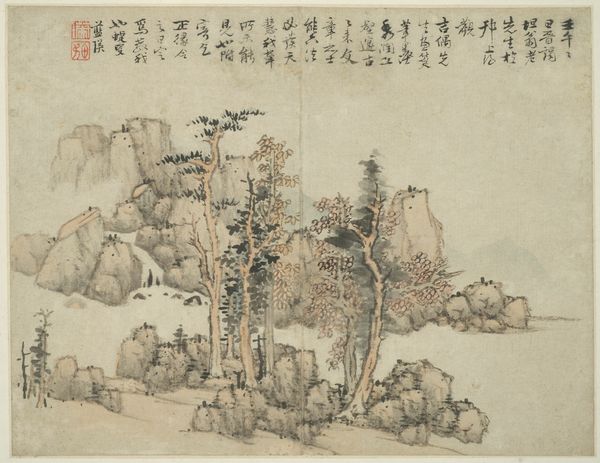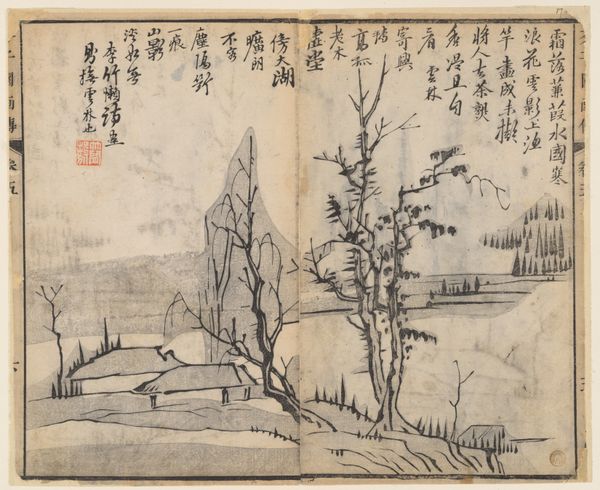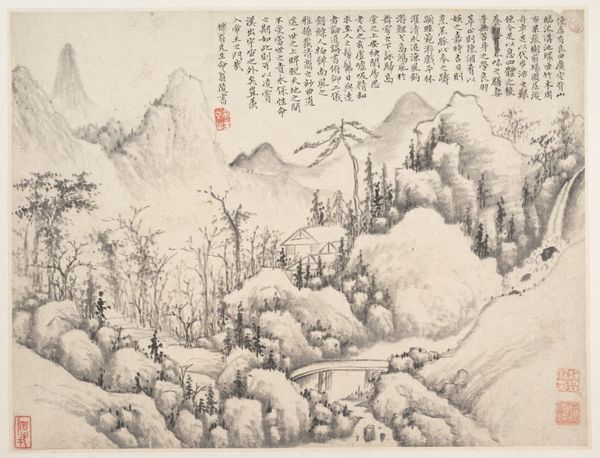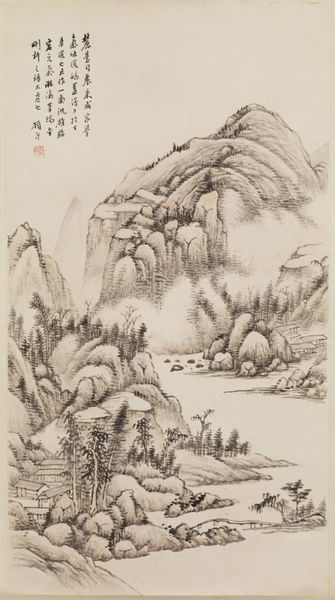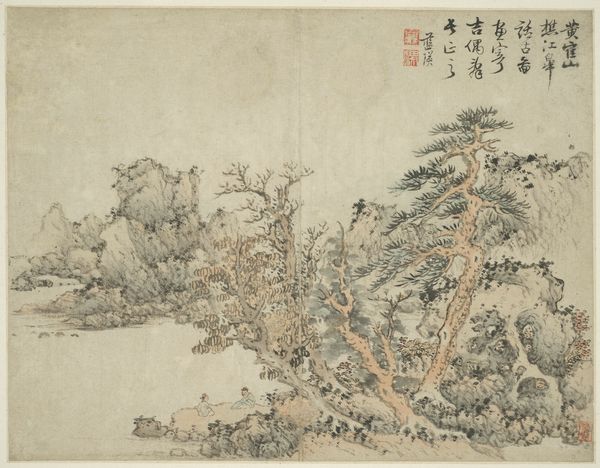
Mt. Heng, after Juran (active ca. 960–965), from the Mustard Seed Garden Manual of Painting 1679
drawing, print, ink
drawing
asian-art
landscape
ink
Dimensions: 9 5/8 x 11 13/16 in. (24.4 x 30 cm)
Copyright: Public Domain
Curator: Here we have Wang Gai’s “Mt. Heng, after Juran, from the Mustard Seed Garden Manual of Painting,” dating back to 1679. It's a print, primarily ink on paper. Editor: It feels so deliberate, almost like an architectural rendering rather than a romantic vision of the mountain. The stark lines and organized composition give it a sense of precision. Curator: Precisely. The “Mustard Seed Garden Manual” was incredibly influential as a teaching aid. It codified techniques and styles, making art accessible through reproducible images. Consider the social context: it democratized painting practices. Editor: So, not a masterwork intended for a palace wall, but rather a practical guide? How fascinating. It speaks to the consumption of art instruction in the Qing Dynasty, using print as a way to efficiently educate those who had no other access. It almost feels…mass produced. Curator: Well, think of it as art labor in a new form! Skilled artisans would carve these images into woodblocks, enabling the relatively inexpensive production and dissemination of artistic knowledge. The book itself became a commodity. Editor: And looking closer at the buildings nestled amongst the peaks, it presents us with an interesting insight into the societal ideals being promulgated; we can see both what the manual taught, but perhaps what society expected as well. What did Mt. Heng *mean* to the educated classes in this moment? Curator: Right, this "copy" connects to tradition. Juran was a celebrated artist of the Song dynasty. The visual language embedded within Wang Gai’s copy would allow painters, even far removed from access to art or a teacher, a direct line to established and approved values of painting, nature, and their relationship. Editor: It all really speaks to the transformation of artistic production and education. Something lost, perhaps, but also so much gained in terms of availability. Thanks to those carved blocks, art education didn't need a wealthy patron any longer, it could be brought to your home for less than a textbook! Curator: I concur, it presents us with questions around originality, the status of art objects, and access. A copy is no longer necessarily devalued; rather, the work highlights a pivotal point in the dissemination of knowledge and art-making itself.
Comments
No comments
Be the first to comment and join the conversation on the ultimate creative platform.
